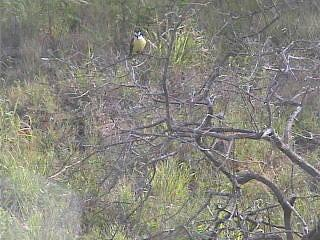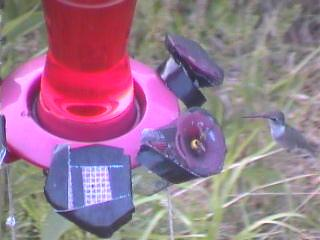Here are some shots from today of what looks like a new bird for the game, at least if we can figure out what it is. These four shots were all by txbird; either no one else was on the system at the time, no one else was paying attention, or no one else had any shots left:




It’s clearly a flycatcher, and the overall color pattern says Myiarchus to me. If I were seeing this bird around my Southern California home, I wouldn’t even wonder; I’d call it an Ash-throated Flycatcher and be done with it (which I realize is a little bit bogus; rarities happen, after all). But in the south-central Texas environs of CONE Welder things are more complicated.
Sibley shows three species of Myiarchus flycatchers near CONE Welder in the summertime: Ash-throated, Brown-crested (which is a species of interest in the shifting-breeding-range study), and (maybe) Great Crested. The Welder checklist gives the following:
| S | S | F | W | |
| Ash-throated Flycatcher | R | U | ||
| Great Crested Flycatcher | O | O | ||
| Brown-crested Flycatcher | R | U |
The three species are quite similar-looking, and even though we’ve got a number of excellent shots here, I can’t say that I’m confident based on appearance which one of the three birds to call it. But overall I guess if I had to pick something I’d pick Ash-throated Flycatcher: It looks as much like that to me as it does either of the others, and the Sibley range map and the Welder checklist both agree that it’s unambiguously there in summer. But I really don’t know.
I’d definitely be interested in whether Dr. Glasscock has any opinion about this bird’s ID. And of course, it goes without saying that I’ll be watching closely to see if we can get any more shots of this very interesting bird. Thanks, txbird, for doing such a great job on the camera!











